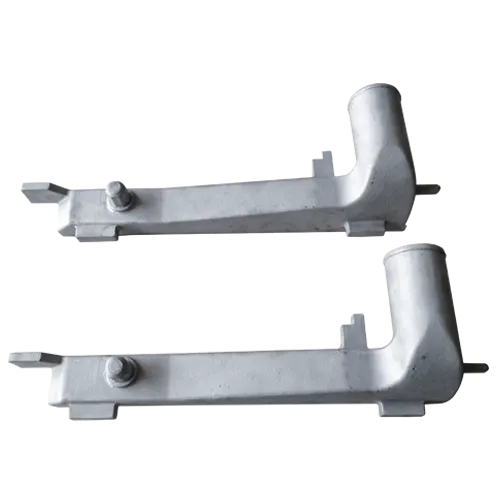Mobile:+86-311-808-126-83
Email:info@ydcastings.com
Italian
Advanced Techniques in Metal Casting for High-Quality Mold Production and Design
The Evolution and Significance of Metal Casting Molds
Metal casting is one of the oldest manufacturing processes, dating back thousands of years, and it has played an essential role in the development of civilization. At the heart of this process lies the casting mold, a crucial element that shapes the molten metal into desired forms. This article delves into the various types of metal casting molds, their evolution, significance, and future prospects.
Understanding Metal Casting Molds
A metal casting mold serves as a container into which molten metal is poured to create a particular shape. The mold typically consists of two halves that may be pressed together or held by a framework. Once the metal cools and solidifies, the mold is removed to reveal the finished product. Molds can be made from various materials, including sand, metal, ceramic, and plaster, each chosen based on the specific requirements of the casting process.
Types of Metal Casting Molds
1. Sand Molds Among the most traditional types, sand molds are made from a mixture of sand, clay, and water. They are favored for their ability to capture intricate details, making them ideal for complex designs. Sand molds can be reused, although they degrade over time.
2. Permanent Molds These molds are crafted from metal and are designed for repeated use. They are typically used in processes like die casting and offer greater dimensional accuracy than sand molds. Permanent molds are preferred for high-volume production due to their durability.
3. Investment Molds Also known as lost-wax casting, investment molds are created by coating a model in a ceramic material. Once the coating hardens, the model is melted away, leaving behind a cavity to pour the molten metal. This method produces highly detailed and complex shapes.
4. Die Molds Die casting involves forcing molten metal into a mold cavity under high pressure. This process is particularly effective for producing parts with precision and smooth finishes, making it ideal for components in industries such as automotive and electronics.
5. Ceramic Molds Used primarily for high-temperature and high-precision casting applications, ceramic molds can withstand extreme conditions. They are often employed in the aerospace and medical industries where quality is paramount.
metal casting molds

The Evolution of Metal Casting Molds
The technology behind casting molds has evolved significantly over the millennia. Ancient civilizations primarily used clay and stone to create molds, leading to rudimentary castings. As metallurgy progressed, so did the complexity of molds. The advent of industrialization brought about innovations such as mass production techniques, which paved the way for modern casting methods.
Today's casting molds utilize computer-aided design (CAD) technologies to create precise and intricate patterns. The integration of automation and robotics has further enhanced the efficiency and consistency of mold production. These advancements have been instrumental in meeting the growing demands for complex parts across various industries.
Significance of Casting Molds in Modern Manufacturing
Casting molds are indispensable in numerous sectors, including automotive, aerospace, art, and construction. Their ability to form complex shapes allows manufacturers to produce parts with enhanced performance characteristics, reducing the need for additional machining and assembly. This not only streamlines production processes but also cuts costs and minimizes material waste.
Moreover, casting technology continues to adapt to the demands of sustainability. Techniques like 3D printing of molds are being explored, reducing the energy and material input required for traditional mold-making. Such innovations promise to make casting more eco-friendly without compromising quality or detail.
Future Prospects
As the demand for customized and high-performance products increases, the role of metal casting molds will become even more critical. Technologies such as additive manufacturing are poised to revolutionize mold design and production. By leveraging 3D printing and smart materials, the future of casting molds looks bright, enabling unprecedented design freedom and efficiency.
In conclusion, metal casting molds are a fundamental component of the manufacturing process. Their evolution from simple designs to advanced, highly technical molds highlights the importance of innovation in meeting contemporary demands. As industries continue to evolve, so too will the technologies that support them, ensuring that metal casting remains a vital player in the global manufacturing landscape.











